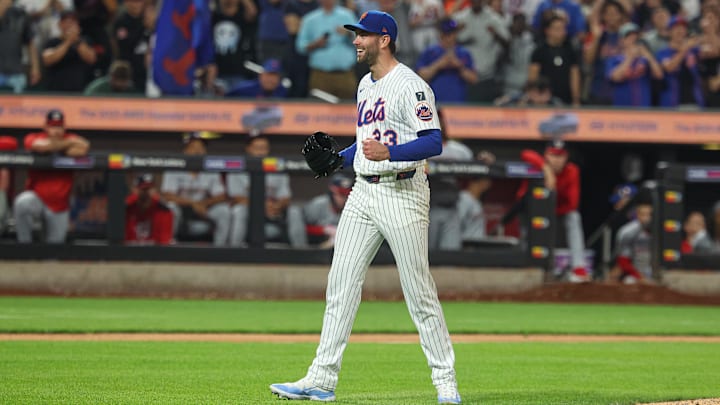Some players make noise; others quietly get the job done. David Peterson falls firmly in the second camp. He doesn’t dominate highlight reels, he doesn’t rack up strikeouts, and he isn’t the type to demand attention. The New York Mets have leaned on him all season, yet whispers linger that he might be too risky for October. Easy to say, harder to justify once you look a little closer.
Critics love a tidy argument, the kind that fits neatly into a “playoff no-go” box. Peterson doesn’t fit the mold, making it convenient to doubt him, but convenience isn’t proof. The more you consider it, the weaker those reasons become. As the Mets push toward the postseason, the conversation about Peterson is just beginning and could defy skeptics' expectations.
The Mets might quietly need Peterson more than anyone realizes this October
Will Sammon from The Athletic, recently suggested that Peterson might be too risky to start in the postseason, noting the Mets could benefit from a pitcher with more swing-and-miss stuff on a team that has struggled defensively. That point has some merit, but evaluating a starter isn’t just about strikeouts. Durability, consistency, and the ability to work deep into games matter just as much—and in those areas, Peterson has quietly excelled all season.
The Mets giving David Peterson a postseason start should they make it that far is "too risky," says @WillSammon: "I just prefer more swing and miss, especially with a team that has trouble making plays"
— SNY Mets (@SNY_Mets) September 15, 2025
Will, @NikiLattarulo, and @PatMcCarthy_ on Mets Off Day Live pic.twitter.com/tbmxvVxQD7
Over 28 starts, he has reached the sixth inning in 21 of them, allowing more than four runs in only four outings. Across 162.1 innings, he has surrendered 155 hits while maintaining a 3.77 ERA. While he has issued 60 walks, a number he could improve, nearly every other aspect of his performance highlights the steady, reliable pitching teams need in October.
Peterson’s skill in inducing ground balls is another underappreciated weapon. With a 55.8% ground-ball rate, ranking in the top six percent in MLB, he has helped convert 19 double plays, often getting out of jams without needing strikeouts. Before Nolan McLean became the rotation’s ace, Peterson was the staff’s most dependable starter, quietly carrying the team through rough patches and proving he can handle high-leverage innings.
The rest of the Amazins' rotation offers little reassurance. Sean Manaea has moved to the bullpen, Kodai Senga is pitching in AAA Syracuse after struggling since returning from injury, Clay Holmes has trouble working deep into games, and Jonah Tong recently had a rough second outing. None of these arms has proven they can reliably replace Peterson in a tight 3-to-4-man playoff rotation, making his role even more critical.
With McLean firmly established as the rotation’s ace and Brandon Sproat showing promise in just two starts, the Mets’ postseason plans still rely heavily on Peterson. He isn’t flashy, but he’s durable, reliable, and has proven he can handle high-stakes innings. When the postseason pressure hits, Peterson is the arm the Mets can trust to deliver the big outings that could define their playoff run.
